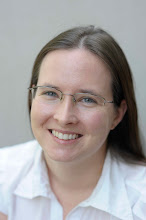Ms. Selover's class song is called "Doong gul ge." It is a game song from Korea. There are two parts of Korea. North and South Korea used to be united as one country but split in 1948. They are bordered by China and Russia, and Japan is also nearby. There are about 70 million people inKorea- 23 million in the north, ad 50 million in the south. Korean food has noodles, rice, and meat, but is best known for kimchi, which is a fermented vegetable (usually cabbage), like a pickle. The traditional clothing is called hanbok which means “Korean clothing”. It usually refers to the formal wear which is very colorful and often has many layers that are tied on. Students will sing the song in Korean and English. Here are the lyrics, a pronunciation guide, and the translation for the text.
Korean Lyrics:
Doong gul ge doong gul ge
(repeat)
Bing gul bing gul dol ah kah miaw
Chum ul chup shi da
Son bia kul chi mian sawh
No reh rul pu ru miaw
La la la lachul kaw up ge
Chum chu cha
Ring-a-ring-a-ring a-ring-a-ring-a-ring
(repeat)
Son eh son ul chop go
Mo du dah hahm ge
Chul kaw up ge chum ul chup shi da
Pronunciation:
doong gool geh doong gul geh
(repeat)
beeng gool beeng gool dohl ah kah meeyaw
choom ool choop shee dah
sohn byah kool chee myahn sawh
noh reh rool poo roo myaw
lah lah lah lah chool kaw oop ge
choom choo chah
leeng-ah-leeng-ah-leeng ah-leeng-ah-leeng-ah-leeng
(repeat)
sohn eh sohn ool chohp goh
moh doo dah hahm geh
chool kaw oop geh choom ool choop shee dah
Translation:
Round and round
Let's dance around in a circle
Let's clap; let's sing
Let's run together
Ring-a-ring-a-ring
Hold hands all together
Let's run together
English Lyrics:
Round and around we go (repeat)
Dance around the circle now
Don't let your feet be slow
Circle around and clap
Circle around and sing
Let's all run together now
Around the ring
Ring-a-ring-a-ring (repeat)
Hopping as we go
And jumping as we sing
Let's all run together round the ring

